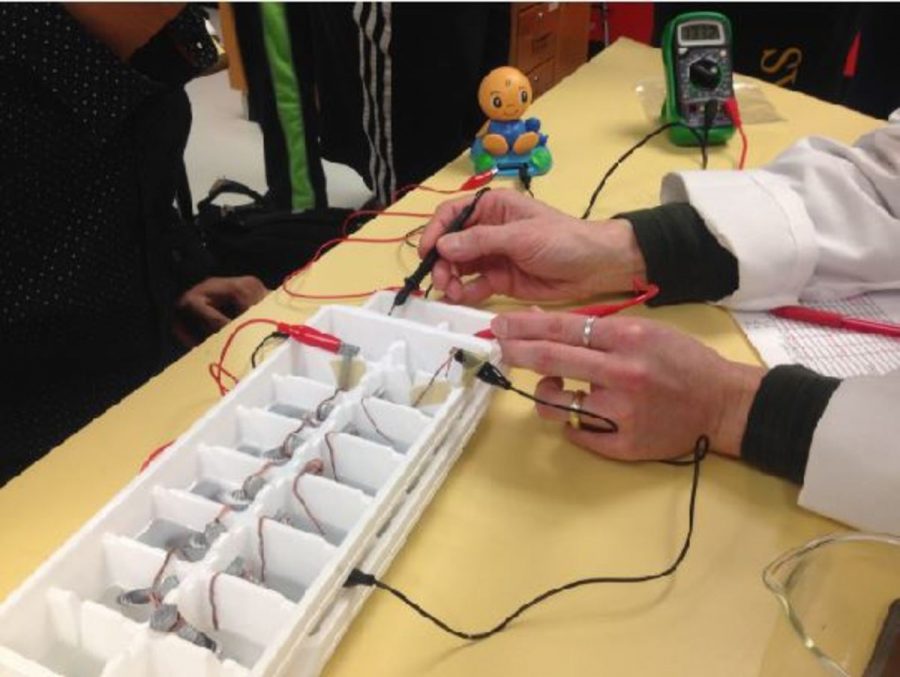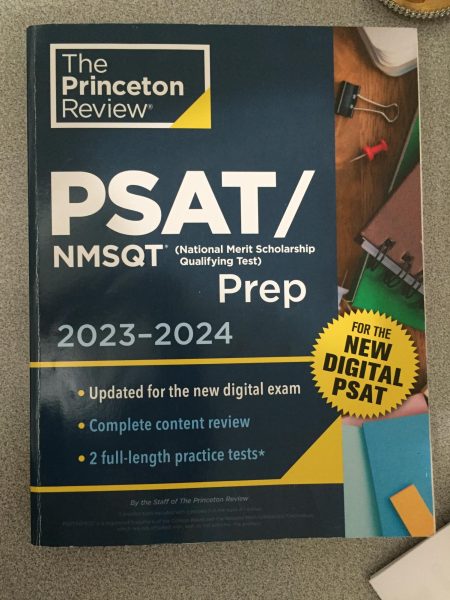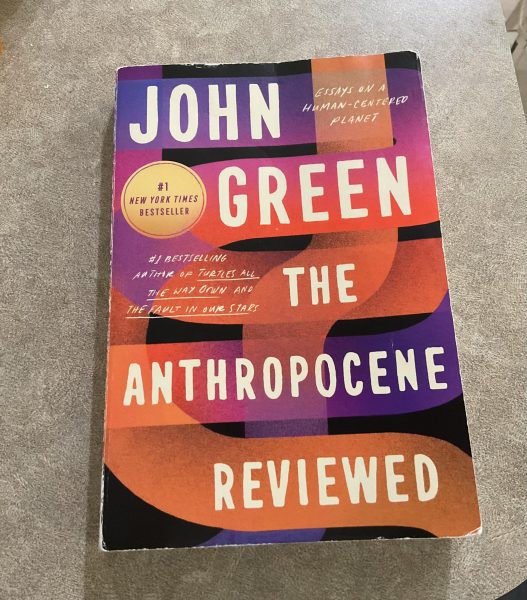AP Chemistry charges into second semester
POSITIVELY CHARGED. Mr. Geyer tests the battery of Rishi Dasgupta, 11, using a voltmeter, a device that measures voltage. This particular design used two ice cube trays, galvanized nails, copper wires, a table salt and toilet cleaner solution and energized a small bobblehead that was originally intended. “Even as an AP Chemistry student, the battery challenge stretched my chemistry knowledge and allowed me to have a hands-on experience with the very reactions we learn about in the classroom. From conception of an idea to a finished battery, it was an all-around valuable learning experience,” Dasgupta said.
Over winter break, Mr. Michael Geyer’s AP Chemistry students were challenged with designing a homemade battery out of household items as an introduction to their next unit: electrochemistry.
As motivation for attempting the project, students who put together a battery that followed Geyer’s parameters were given two percent extra credit to add onto their final second, third, or fourth quarter grade.
Requirements included creating a wet cell battery as opposed to a dry cell, powering a small object of their choosing, only using commercially accessible household items, and being no larger than a standard shoe box.
Those who wished to excel beyond the simple rubric vyed for an additional one percent by competing with fellow classmates for battery longevity, highest overall voltage, highest single-cell voltage, and strongest current.
Sara Cohen, 11, received a total of four percent extra credit by sweeping both voltage categories, and Gregory Rivin, 11, received a total of three percent for having the strongest current.
“Well, first I had no idea where to start because I didn’t have any knowledge on what goes into the battery process. However, once I started doing some research and watching some videos, I could finally understand the fundamentals and how I needed to build it,” Rivin said.
As for longevity, “In previous years, batteries have power until May so it can take a long time until we find out [whose battery runs the longest],” Geyer said.
However, this year, the battery of Harsimran Makkad, 11, eventually ran the longest.
“It was really awesome. Seeing how others’ batteries looked so different yet were able to power something the same way really changed my perspective on how things worked,” said Nir Kadosh, 11, said.
Your donation will support the student journalists of Sycamore High School. Your contribution will allow us to purchase equipment and cover our annual website hosting costs.




![Mock Trial members from Gold and Green team last year pose for a picture in front of the OCLRE building in Columbus. "We all put in so much work [last] year. I know [this] year we’ll come back improved and ready to win!” said Ogunbodede.](https://shsleaf.org/wp-content/uploads/2025/10/IMG_4121-600x411.jpg)



